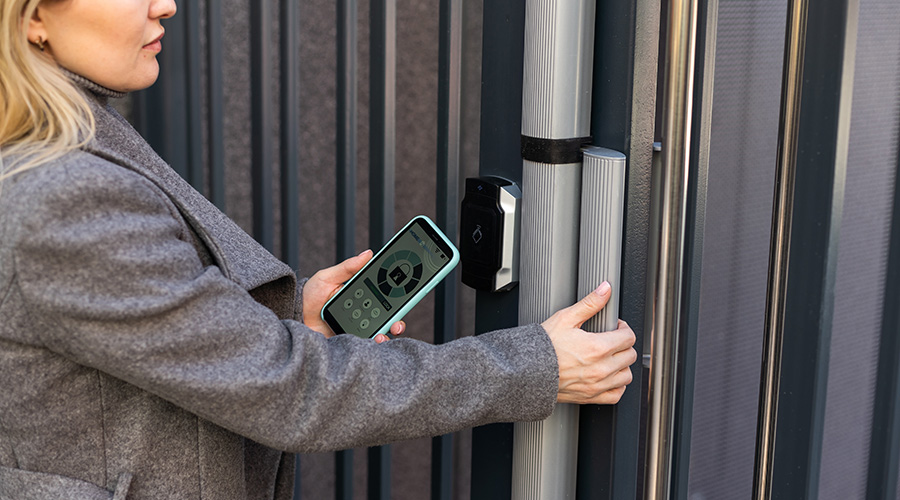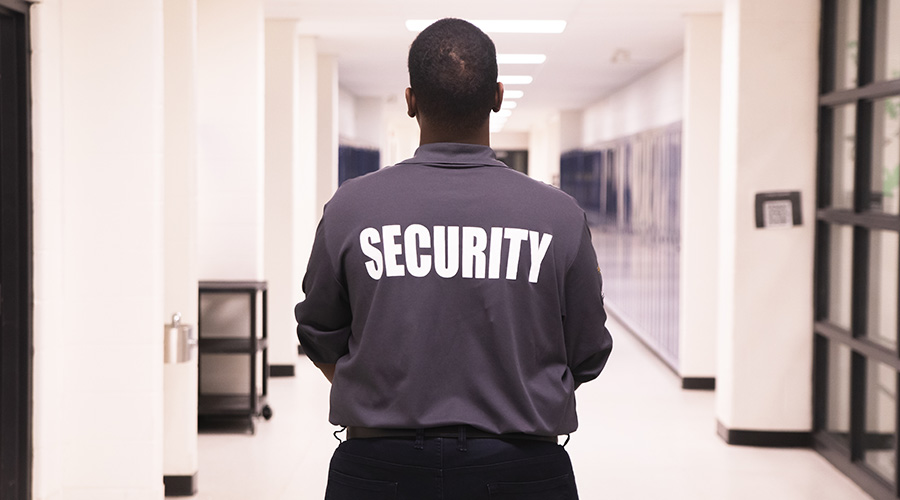IP Camera Or Analog? CCTV Technology Update
The era of analog closed circuit television (CCTV) systems is coming to an end. The multiplexer, video cassette recorder, switcher and all of those T-160 tapes are being replaced with computers, embedded processors, capture cards, encoders, decoders, codecs, redundant array of disks (RAID), network video recorders and 10/100/gigabyte/optical networks, and that’s only the beginning of the list.
Digital camera technology is the future of CCTV. For those who have not embraced digital, realize that the train is boarding and will soon leave the station. In terms of information and knowledge, you will be left behind unless you get on the train as soon as possible, because it will tear through analog networks with the auspices of something better and cheaper.
There is much for facility executives to learn about digital CCTV technology. One of the most important points has to do with resolution, which translates into video quality.
With an analog system, the term “horizontal lines of resolution” dictated what the video quality and recording quality was. The format of analog video was standardized, which meant that it was possible to make a truly apples-to-apples comparison among products. In addition, products from different manufacturers were interoperable. The weakest link in the chain for an analog system occurred when there was an analog camera that produced analog video signal at 400 horizontal lines of resolution, but a recorder that could only record at 350 horizontal lines of resolution. Less information meant less quality.
Digital Recording
For purposes of this article, there are two types of digital recording: direct digital and encoded digital. It is important to recognize the differences between the two. Direct digital is much like a digital photographic camera, which captures pictures directly. As a result, the direct digital image (also called a frame) has a great deal of information. Some of these cameras are described as mega-pixel cameras, because the information (picture) captured can be very detailed. The larger the number of mega-pixels, the greater the detail and commensurate file size of the picture. These pictures are 100 percent digital. They are not scanned or converted and can be captured in a variety of formats, including JPEG.
The second type of digital recording — encoded digital — involves encoding or capturing analog frames of video and converting them to digital pictures.
Although the term “frame” is used in discussions of both digital and analog video, it has somewhat different meanings in each case. As it relates to analog, a frame refers to a single picture that interlaces two fields, which are painted onto an analog monitor as a single frame. By comparison, one frame in the digital world equates to a single photo or digital picture file. Digital recording captures the scene or the analog video picture-by-picture or frame-by-frame. The individual frames, created by either analog or digital, create the appearance of motion, but in reality the movement is just a grouping of images presented very quickly.
The biggest difference between encoded and direct digital is the amount of information captured. The information captured by a digital camera is only limited to the number of pixels that can be captured in a field of view. As with digital photographic cameras, an eight mega-pixel unit captures less information than a 10 mega-pixel camera.
By contrast, when analog video is encoded to a digital file, the only information available is information that has already been captured. A 400-line camera that is encoded to digital still is limited to the 400 lines that were originally captured. Although these horizontal lines of resolution are converted to digital, there is no magic process that will add information to an analog frame/field that was previously captured. As a result, the video captured cannot be enhanced — an important distinction to be aware of when it comes to direct and encoded digital CCTV.
The data from digital files is large, which is why data storage and transmission are big concerns. Digital video utilizes proprietary conversion methods called codecs to strip information from the files, thereby reducing their size. This information can include image size, colors, grayscale, frames-per-second, etc.
Codecs now use a recording method called group of pictures (GOP) to further reduce file size. GOP captures a reference frame, which is constantly compared to the video source and is updated when there is a change in the picture. However, only the area in the picture that has changed is updated. This typically results in fuzziness or blurring of the video for the areas that changed. Nevertheless, GOP recording is preferred because of the reduced file sizes, which limit storage and transmission requirements.
The problem has always been that the more quality in a video file, the greater the file size, and the lower the file size, the less quality of the video — until now.
New Method
To tackle the challenge of getting higher video quality with smaller file sizes, a group of standard-setting organizations formed the Joint Video Team. The goal of the Joint Video Team was to develop a standard that would provide for good video quality and substantially lower file sizes. That standard is known as H.264. The most important thing about H.264 is that it requires substantially less data storage, about half of that compared to MPEG-2, while enhancing video performance compared to what is currently available (MPEG-4). Using H.264, the blurriness that occurred with older codecs using GOP has been all but eliminated.
H.264 has had widespread application from over the air broadcasting, satellite broadcasting, mobile video, IP TV and most notably in both the now defunct HD-DVD and current Blu-ray products. Even YouTube is converting all of its video archives to H.264-compliant video. As a result, this codec has been dubbed the “next generation standard in digital video,” and digital video recorder and IP camera manufacturers are latching on.
The biggest problem with H.264 is that current encoding devices like IP cameras and digital video recorders may not have the computational horsepower to stream the video fluidly. Make no mistake, a computer would have no problem rendering the video, but digital video recorders and IP cameras are built lean with minimal expansion capabilities. In some instances, older equipment being purchased now may not work with H.264. Make sure to ask this question when selecting a digital CCTV product. Otherwise there may be a substantial upgrade ahead to obtain H.264.
Future Considerations
Many organizations are not fully prepared for the world of digital cameras and recording that is fast approaching. Unlike analog systems, digital CCTV is a marriage between hardware and software (codecs). It’s important to keep that point in mind when selecting a product that not only will meet today’s needs, but also future requirements.
Consider what might be called the downside of H.264: the fact that more processor power is required to convert an analog or digital file into this format. This is bad news for people who have older digital video recorders. The older units may lack the processing power needed to enable the H.264 codec to operate on their platform.
What’s more, even though H.264 represents a significant advance for digital video, something better will undoubtedly be developed in the future. And that new codec will likely require even more processing power.
Anyone considering the procurement of a digital recording solution should ensure that it is capable of running H.264 and other future and more robust codecs. Look for hardware manufacturers to start building larger memory reserves and faster processors to manage the ever-changing software landscape of digital CCTV. By being proactive now, facility executives may be able to garner future benefits, in terms of both functionality and quality, that otherwise would not be possible.
Sean A. Ahrens, CPP, CSC, is a project manager for security consulting and design services. Ahrens has more than 17 years of experience in the security industry. He sits on a variety of standards-setting panels including those associated with Underwriters Laboratories and the Security Industry Association. He is a member of the Commercial Real Estate Council of ASIS International.
Related Topics:











